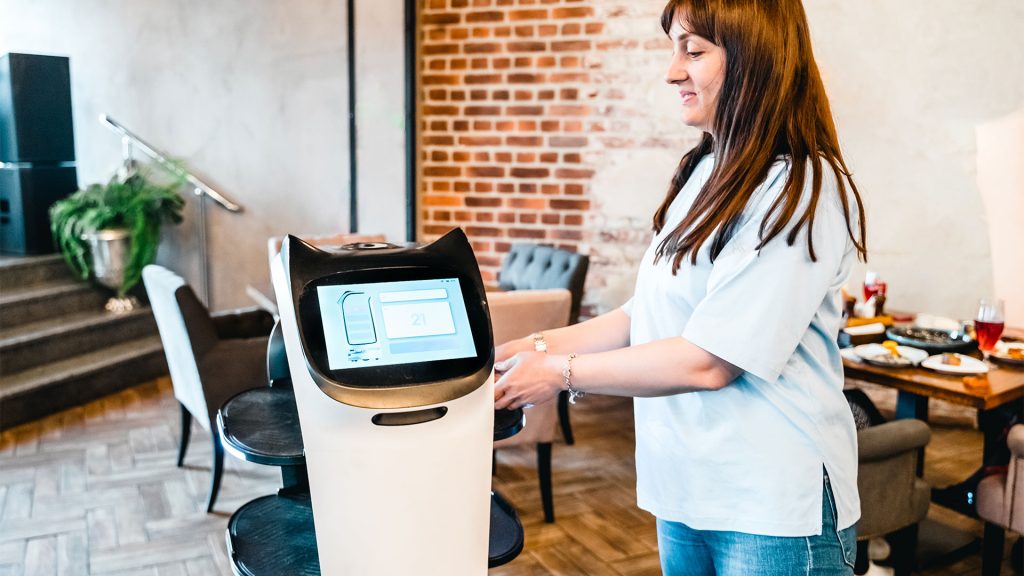ML’s Role in Advancing Autonomous Retail

Machine Learning’s Role in Advancing Autonomous Retail: A Glimpse into the Future of Shopping

Imagine walking into a store, picking up your items, and simply walking out—no lines, no checkout, and no hassle. This isn’t a scene from a sci-fi movie; it’s the future of retail, powered by Machine Learning (ML). Autonomous retail, where stores operate with minimal human intervention, is rapidly becoming a reality, and ML is at the heart of this transformation. From cashier-less stores to personalized shopping experiences, ML is revolutionizing the retail industry in ways that are both exciting and game-changing. In this article, we’ll explore how ML is driving the autonomous retail revolution, the benefits it offers, and real-world examples that showcase this tech-driven shopping experience.
Introduction
The retail industry is undergoing a significant transformation as technology reshapes how we shop. Autonomous retail is at the forefront of this revolution, offering a seamless and frictionless shopping experience that is driven by Machine Learning. From inventory management to customer interactions, ML enables retailers to operate more efficiently, provide personalized experiences, and reduce operational costs. In this article, we’ll dive into the world of autonomous retail and explore how ML is making it possible.
Understanding Autonomous Retail
Autonomous retail refers to the use of advanced technologies, such as ML, artificial intelligence (AI), and the Internet of Things (IoT), to create a retail environment that requires minimal human intervention. This includes cashier-less stores, smart shelves, and automated inventory management systems. The goal is to provide customers with a more convenient and efficient shopping experience while optimizing store operations.
The Role of Machine Learning in Autonomous Retail
Machine Learning plays a critical role in enabling autonomous retail by analyzing vast amounts of data, predicting customer behavior, and automating various processes. Here’s how ML is powering the next generation of retail:
Customer Behavior Analysis
ML algorithms analyze customer data, such as purchase history, browsing patterns, and preferences, to predict future behavior. This allows retailers to offer personalized recommendations, targeted promotions, and tailored shopping experiences that resonate with individual customers.
Real-Time Inventory Management
ML-powered systems can monitor inventory levels in real-time, predicting when items need to be restocked and optimizing supply chain operations. This ensures that stores are always stocked with the products customers want, reducing the risk of stockouts and overstocking.
Computer Vision for Cashier-Less Stores
Computer vision, a subset of ML, is used to identify products and track customer movements in cashier-less stores. This technology enables customers to simply pick up items and leave, with the system automatically charging their account based on what they take. Amazon Go is a prime example of how computer vision and ML work together to create a seamless shopping experience.
Predictive Analytics for Demand Forecasting
ML-driven predictive analytics can forecast demand for specific products, helping retailers make informed decisions about pricing, promotions, and inventory management. This leads to better resource allocation and maximizes profitability.
Chatbots and Virtual Assistants
ML powers chatbots and virtual assistants that provide real-time customer support, answer queries, and even help with product recommendations. These AI-driven tools enhance the shopping experience by offering instant assistance without the need for human intervention.
Key Benefits of ML in Retail Automation
ML offers numerous benefits in the realm of autonomous retail:
Enhanced Customer Experience
ML enables retailers to provide a highly personalized shopping experience by analyzing customer data and offering tailored recommendations. This not only increases customer satisfaction but also boosts sales and brand loyalty.
Improved Operational Efficiency
By automating processes such as inventory management, pricing, and customer support, ML reduces the need for manual intervention, streamlining operations and reducing costs.
Reduced Checkout Times
Cashier-less stores powered by ML eliminate the need for traditional checkout lines, allowing customers to shop more quickly and conveniently. This leads to a more satisfying shopping experience and increased customer retention.
Accurate Demand Forecasting
ML-driven predictive analytics provide retailers with accurate demand forecasts, enabling them to make better decisions about inventory, pricing, and promotions. This reduces waste, optimizes resources, and improves profitability.
Cost Savings
By automating various aspects of retail operations, ML reduces labor costs and minimizes the risk of errors, leading to significant cost savings for retailers.
Real-World Applications of ML in Autonomous Retail
Here are some real-world examples of how ML is advancing autonomous retail:
Amazon Go
Amazon Go is perhaps the most well-known example of autonomous retail in action. These cashier-less stores use ML, computer vision, and sensor fusion technology to allow customers to walk in, grab what they need, and walk out without going through a checkout line. The system automatically detects what products are taken and charges the customer’s account accordingly. Read more
Standard Cognition
Standard Cognition is another company pioneering autonomous retail. Their AI-powered system uses cameras and ML algorithms to track shoppers and the items they pick up, eliminating the need for traditional checkouts. The technology is being adopted by various retailers looking to streamline their operations and enhance the customer experience. Read more
Zippin
Zippin offers a cashier-less retail platform that uses ML to track inventory and customer purchases in real-time. Their technology is being used in convenience stores, airports, and even sports stadiums, providing a seamless shopping experience for customers on the go. Read more
Alibaba’s Hema Stores
In China, Alibaba’s Hema stores are leading the way in autonomous retail. These stores use ML to offer personalized shopping experiences, automate inventory management, and enable cashier-less checkouts. Customers can also use the Hema app to scan products, view detailed information, and place orders for delivery. Read more
Walmart’s Intelligent Retail Lab (IRL)
Walmart’s IRL is a real-world test of autonomous retail technology. The store is equipped with AI and ML systems that monitor inventory, analyze customer behavior, and optimize store operations. The goal is to create a more efficient and customer-friendly shopping environment. Read more
Challenges and Considerations
Privacy Concerns
The use of ML and AI in retail raises privacy concerns, particularly when it comes to data collection and surveillance. Retailers must ensure that customer data is handled securely and that privacy regulations are followed.
High Implementation Costs
The initial cost of implementing autonomous retail technology can be high, making it a significant investment for retailers. However, the long-term benefits in terms of efficiency and cost savings often outweigh the upfront costs.
Technical Limitations
While ML and AI are advancing rapidly, there are still technical challenges to overcome, such as ensuring the accuracy of computer vision systems and maintaining real-time data processing capabilities.
Workforce Impact
The shift to autonomous retail may lead to job displacement for workers in traditional retail roles. Retailers need to consider how they will manage this transition and provide opportunities for reskilling and upskilling.
Future Trends in Autonomous Retail
Integration with Augmented Reality (AR)
The future of autonomous retail may see the integration of AR, where customers can use their smartphones or AR glasses to interact with products, receive real-time recommendations, and access detailed product information while shopping.
Voice-Activated Shopping
Voice-activated shopping assistants, powered by ML, will become more prevalent, allowing customers to shop hands-free by simply speaking their orders. This will enhance convenience and further streamline the shopping experience.
Hyper-Personalized Shopping
As ML algorithms continue to improve, retailers will be able to offer hyper-personalized shopping experiences, where every aspect of the store is tailored to the individual customer—from product recommendations to store layouts.
Autonomous Delivery Systems
Autonomous retail will extend beyond the store, with ML-powered drones and robots handling deliveries. This will further enhance convenience and speed up the entire shopping process, from purchase to delivery.
Conclusion
Machine Learning is revolutionizing the retail industry by enabling autonomous stores that offer a seamless and personalized shopping experience. From cashier-less stores to real-time inventory management and predictive analytics, ML is at the heart of this transformation. As retailers continue to embrace this technology, the future of shopping looks increasingly automated, efficient, and customer-centric.
For more insights and resources on how ML is advancing autonomous retail, visit TGI.



